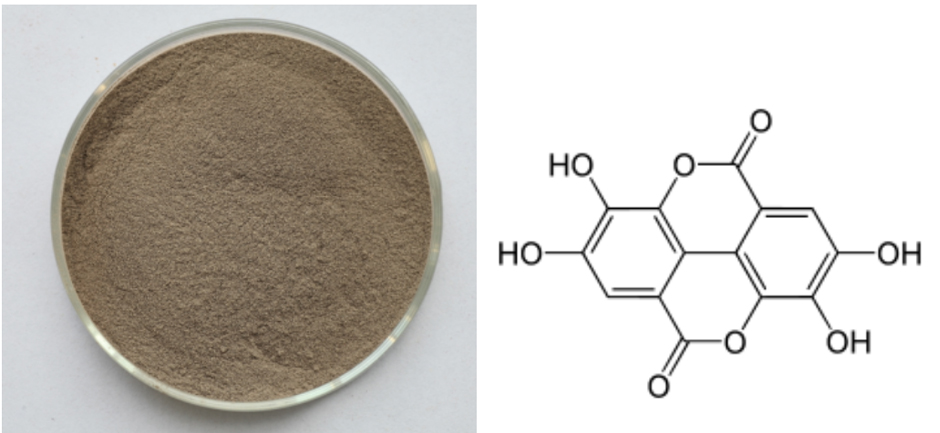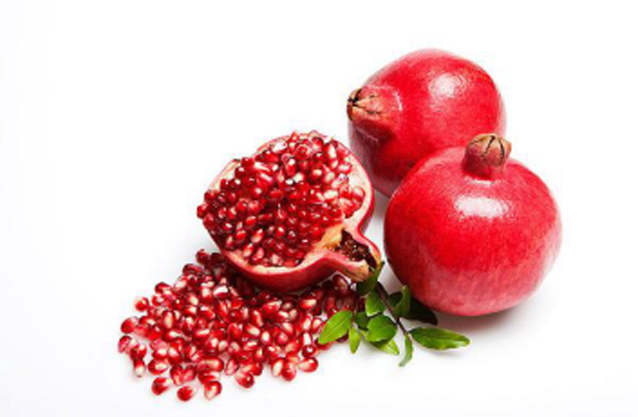Wholesale Price China Pomegranate seed extract Factory for New York
Wholesale Price China Pomegranate seed extract Factory for New York Detail:
[Latin Name] Punica granatum L
[Plant Source] from China
[Specifications]Ellagic acid≥40%
[Appearance] Brown Fine Powder
Plant Part Used:Seed
[Particle size] 80 Mesh
[Loss on drying] ≤5.0%
[Heavy Metal] ≤10PPM
[Storage] Store in cool & dry area, keep away from the direct light and heat.
[Shelf life] 24 Months
[Package] Packed in paper-drums and two plastic-bags inside.
[Net weight] 25kgs/drum
Introduction
Pomegranate, (Punica granatum L in Latin), belongs to the family Punicaceae which includes only one genus and two species. The tree is native from Iran to the Himalayas in northern India and has been cultivated since ancient times throughout the Mediterranean region of Asia, Africa and Europe.
Pomegranate offers abundant benefits for the cardiovascular system by preventing damage to arterial walls, promoting healthy blood pressure levels, improving blood flow to the heart, and preventing or reversing atherosclerosis.
Pomegranate may benefit people with diabetes and those at risk for the disease. It helps lower after-meal blood sugar levels and protects the cardiovascular system from diabetes-induced damage.
Pomegranate shows promise in killing prostate cancer cells, whether the cells are hormone-sensitive or not. Pomegranate also helped halt the progression of prostate cancer in men who had undergone surgery or radiation for the disease.
Pomegranate may fight the degeneration of joint tissue that leads to painful osteoarthritis, and may protect the brain against oxidative stress-induced changes that can lead to Alzheimer’s. Pomegranate extracts—alone or in combination with the herb gotu kola—help kill the bacteria that contribute to dental plaque, while helping to heal gum disease. Pomegranate also appears to protect the health of the skin and liver.
Function
1.Anti-cancer of rectum and colon, esophageal carcinoma,liver cancer,lung cancer,carcinoma of tongue and skin.
2.Restrain to human immunodeficiency virus(HIV) and many kinds of microbe and virus.
3.Anti-oxidant, coagulant, descenting blood pressure and sedation.
4.Resist to anti-oxidance, senescence inhibition and skin whitening
5.Treat kinds of symptoms caused by high blood sugar, hypertension.
6.Resist to atherosclerosis and tumour.
Application
Pomegranate P.E. can be made into capsules, troche and granule as healthy food. Besides, it has good solubility in water plus the solution transparence and brilliance color, has been widely added into the beverage as the functional content.
Product detail pictures:

Related Product Guide:
To be able to give you benefit and enlarge our business, we also have inspectors in QC Team and assure you our greatest service and products for Wholesale Price China Pomegranate seed extract Factory for New York , The product will supply to all over the world, such as: United Arab Emirates, Colombia, Sydney, Our factory insists on the principle of "Quality First, Sustainable Development", and takes "Honest Business, Mutual Benefits" as our developable goal. All members sincerely thanks for all old and new customers' support. We will keep working hard and offering you the highest-quality products and service.Thanks.
Jogar fora as sementes da abóbora, é o que a grande maioria das pessoas faz.
O uso medicinal da semente de abóbora (ou jerimum, em algumas regiões do Brasil) é comum em vários povos, como os chineses, cuja milenar medicina é uma das mais sábias e eficazes.
As sementes contêm de 44% a 50% de fração oleosa (rica em ácidos graxos mono e poli-insaturados), elevado teor de fibras (23-27%) em relação às demais sementes, albuminas (proteínas – 37% a 40%), cucurbitacina, sais minerais, especialmente zinco, magnésio e potássio, vitaminas do complexo B, sais do ácido fólico (folatos) e outros nutrientes.
A presença da substância cucurbitacina confere à semente de abóbora reconhecida propriedade anti-inflamatória, principalmente nas doenças da próstata e do sistema urinário.
Ela é ainda um ótimo vermífugo para adultos e crianças.
A semente de abóbora torrada e salgada, como normalmente comercializada, não apresenta o mesmo valor terapêutico da semente crua.
Rica em ácidos graxos monoinsaturados, pesquisas têm comprovado que o óleo contido nas sementes de abóbora apresenta resultados benéficos no tratamento de problemas da vesícula (congestão e cálculos) e próstata (hiperplasia).
Outros benefícios da semente de abobora:
– para o coração: óleo contido na semente da abóbora é comparável ao azeite de oliva extravirgem.
– pressão alta: rica em potássio, mineral que cumpre importante função no controle da pressão arterial.
– prisão de ventre: a concentração de fibras na semente de abóbora é bastante elevada, o que torna o consumo diário desta semente muito indicado na prevenção e tratamento da prisão de ventre.
– pele, cabelo e olhos: rica em vitamina E, de reconhecida ação antioxidante, o consumo diário desta semente pode ser um coadjuvante no combate ao envelhecimento precoce, não só da pele, como das células de todo o organismo.
Ela também é rica em vitamina A, que previne doenças como a degeneração macular.
– próstata: considerada um dos melhores tratamentos naturais na prevenção de problemas da próstata e trato urinário.
Receita para problemas de próstata Cozinhe 150 gramas de sementes inteiras de abóbora (frescas e cruas, sem descascar) em 1 litro de água filtrada por 20 minutos em fogo lento. Deixe esfriar e transfira para uma garrafa ou recipiente de boca larga.
Não é necessário coar, pois as sementes permanecerão no fundo, e poderão ser jogadas fora após o total resfriamento. Tome um copo desta água três vezes ao longo do dia.
– elimina vermes: devido a cucurbitacina. Para um tratamento de dose única, a indicação é de 100 a 150 gramas (crianças) e 200 a 250 gramas (adultos) em jejum.
Anote agora a receita de xarope de semente de abóbora para asma, tosse e bronquite
INGREDIENTES
60 gramas de semente de abóbora/jerimum
2 colheres (de sopa cheias) de mel
1 xícara (chá) de água
20 gotas de extrato de própolis
MODO DE PREPARO
Bater todos os ingredientes no liquidificador. Bata muito bem para deixar as sementes bastante trituradas.
Tome 1 colher (chá) 5 vezes por dia. Pode ser consumido por crianças a partir dos 2 anos, porém a dose deve ser reduzida à metade na faixa etária que vai dos 2 aos 7 anos.
Receita de farinha de Semente de Abóbora para colesterol, triglicérides, diabetes e prisão de ventre
INGREDIENTES
Sementes de 1 abóbora
MODO DE PREPARO
Deixe as sementes de molho em água filtrada por algumas horas. Depois, seque-as com o auxílio de um pano e leve-as ao forno moderado por 10 minutos.
Feito isso, torre as sementes em uma frigideira até que fiquem douradas (cuidado para não queimá-las). Bata as sementes secas no liquidificador e depois peneire para obter um pó fino.
Guarde a farinha em um pote com tampa. A dose recomendada são, no máximo, 3 colheres (sopa) da farinha diariamente.
Pode ser adicionada em vitaminas, sopas, saladas e em receitas de bolo.
Prof Dr. Geuns — Katholieke Universiteit Leuven — Bioloog en hoofd van het Laboratorium voor Functionele Biologie van de KULeuven vertelt over de pharma eigenschappen
Factory equipment is advanced in the industry and the product is fine workmanship, moreover the price is very cheap, value for money!







